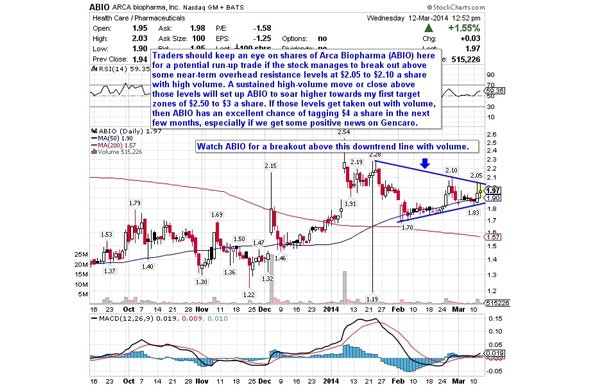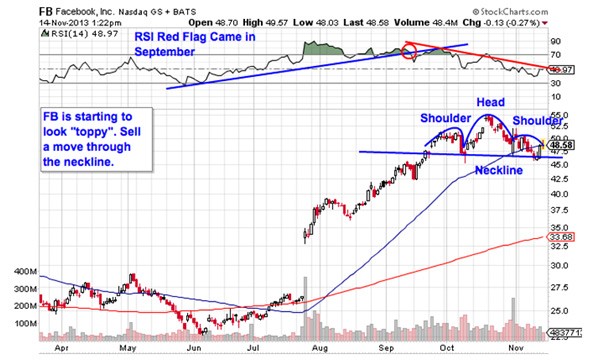Invest Like a Hedge Fund The Pros 5 Favorite Stocks Stockpickr! Your Source for Stock Ideas
Post on: 17 Июнь, 2015 No Comment

By Jonas Elmerraji
Senior Contributor
03/12/14 — 11:11 AM EDT
BALTIMORE (Stockpickr ) — Professional investors are buying stocks with both hands again, taking advantage of a broad market rally that’s been kicking into new highs in March.
>>5 Hated Earnings Stocks You Should Love
But while fund managers are buying stocks, they’re not exactly being creative about it. The five biggest names on their buy lists right now are a handful of blue-chip giants. No, the pros aren’t using their $19.3 trillion in institutional cash to pick up any speculative small targets these days.
Despite the fairly unimaginative buying spree, there’s something to be said for the big name stocks in this environment — really. While momentum has been working exceptionally well for the last year and change, it’s left blue-chip valuations languishing in 2014, making large-cap stocks some of the best bargains on a market that many investors think is too expensive.
So today, we’re taking a closer look at the big names that fund managers picked up in the last quarter.
>>5 Rocket Stocks Ready for Blastoff This Week
To figure that out, we’ve got to take a closer look at 13F filings.
Institutional investors with more than $100 million in assets are required to file a 13F — a form that breaks down their stock positions for public consumption. From hedge funds to mutual funds to insurance companies, any professional investors who manage more than that $100 million watermark are required to file a 13F.
In total, approximately 3,700 firms file 13F forms each quarter, and by comparing one quarter’s filing with another, we can see how any single fund manager is moving their portfolio around. While the data is generally delayed by about a quarter, that’s not necessarily a bad thing. Research shows that applying a lag to institutional holdings can generate positive alpha in some cases. That’s all the more reason to crack open the moves being made with pro investors’ $19.3 trillion under management.
>>5 Toxic Stocks to Sell in March
Topping hedge funds’ buy lists last quarter was Google (GOOG ), the $403 billion Internet behemoth. Google may be a massive company, but that doesn’t automatically mean that investors have missed out on upside opportunities. GOOG is up more than 44% in the last 12 months, shoving into the $1,000 club with a price tag in the four figures. And fund managers still love Google; they picked up 1.34 million more shares last quarter, a boost worth $1.6 billion at current prices.
>>3 Big Stocks on Traders’ Radars
Google is the Internet’s advertising company. The firm’s ad sales from its search engine alone still contribute more than 80% of total revenue, a staggering chunk of the business considering all of Google’s side businesses. Most impressive about Google is the fact that it’s been able to walk away successfully from acquisitions that many viewed as boondoggles. Take the Motorola Mobility acquisition. After overpaying for Motorola’s cell phone arm, Google walked away smelling like roses by selling the stuff it didn’t want to Lenovo.
That track record of smart buys is a big plus for Google in 2014, especially considering the fact that GOOG currently holds more than $55 billion in cash and investments on its balance sheet, enough to cover almost 14% of the firm’s current market cap. That cash position shoves Google’s P/E multiple back down in the 20s. The share price is still not cheap, but it looks a lot less frothy when cash is accounted for.
Want a cheap tech giant? Take a look at Apple (AAPL ). After all, fund managers already are. Big funds added 1.04 million shares of Apple to their portfolios last quarter, picking up a stake worth $557 million today. Apple’s dominance in the smartphone, tablet, and computer markets hasn’t earned it any premiums in the market. As I write, the firm trades for a gaunt 13 times trailing earnings.
>>2 Big Tech Stocks to Trade (or Not)
Apple’s portfolio of products includes the hugely successful iPhone, iPad and iPod mobile devices — and the iOS software that runs them. While the Macintosh line of computers has received a smaller share of attention since the iPhone was introduced, Macs have been gaining sales in leaps and bounds, and Apple’s decision to make future versions of Mac OS X free should help to secure even more converts to the Apple ecosystem. Finally, the firm’s iTunes product is the most popular music and multimedia store in the world. But concerns over market saturation have driven Apple’s valuation down to bargain levels.
The lack of a game changer product in recent years is largely to blame. It’s not enough that Apple’s current products are selling at a breakneck pace, the firm needs to enter new product segments for investors to bestow realistic valuations on shares. But comments from CEO Tim Cook indicate that new product categories are on the way, so the lack of market reaction looks like a big value opportunity in 2014.
With Apple’s mind-bending $141 billion in cash and investments taken into account, the firm could pay for 30% of its market capitalization at current prices. That shoves AAPL’s cash-adjusted P/E ratio to 9.3 — a utility stock valuation, not the multiple you’d expect from a tech giant in a bull market. Fund managers may be onto something in Apple.
Microsoft
Microsoft (MSFT ) was the third-most-bought name last quarter. Noticing a theme here? Professional investors added $29 million shares of MSFT to their portfolios during the quarter, adding a $1.1 billion bet on the Redmond, Wash.-based tech giant. And in 2014, Microsoft sports an Apple-esque discount on shares.

>>5 Stocks Ready for Breakouts
Microsoft is a giant in the software industry, even if its footsteps have been muffled by a lack of corporate direction in recent years. MSFT has been selling Xbox gaming consoles, mobile phones and tablets, but the firm’s success in these segments has been mediocre at best. Today, the firm’s Windows operating system and Office productivity suite provide sticky revenues that add up to the majority of MSFT’s sales. Windows and Office (namely commercial licenses of those products) effectively subsidize the rest of the business — and that’s just fine, as Microsoft attempts to find the next big thing for shareholders.
A long overdue management shakeup could finally bring that. Satya Nadella’s new role as CEO brings the possibility of a real growth strategy again. And a balance sheet with substantial cash gives management the ability to execute on it. While MSFT has a lot of work ahead of it, the firm’s bargain price tag indicates that investors are overemphasizing the problems.
Hilton Worldwide Holdings
The closest thing to a new name on hedge funds’ buy list was Hilton Worldwide Holdings (HLT ). After all, shares of the hotel company only went public back in December. But it’s not exactly a small name — the firm is the world’s largest hotel company with more than 4,000 properties comprising 665,000 rooms in 90 countries. So yes, despite the firm’s short trading history, it’s as much a blue chip as the other names on the list.
Hilton owns a collection of hotel brands, ranging from Hilton to Waldorf Astoria to Hampton Inn. The firm’s revenues are pretty evenly split between owned hotels and franchised locations, but the firm is shifting its efforts more on the franchised side of the business to take advantage of bigger margins and a less capital intense structure. Big efforts to grow room supply abroad should help to tap emerging and chronically under-supplied markets, and they provide big growth potential for a very big hotelier.
There’s no question that the firm’s existing hotel business is very capital intense. Debt loads are manageable for HLT right now, but they should become more manageable as franchised hotels contribute a larger share of revenues in the years ahead. Fund managers picked up 879 million shares of Hilton post-IPO, putting a $19.56 billion stake in institutional portfolios in 2014.
Last up is payment network giant Visa (V ), a name that’s been showing investors some spectacular performance of its own in the last 12 months. Since last March, Visa has rallied more than 41%. Likewise, fund managers have been piling on shares of the payment brand, adding 5.99 million shares last quarter.
Visa is the standard bearer in the payment network business. The firm’s logo is printed on more than 60% of the world’s credit and debit cards, giving it dominance that other firms can’t touch. It doesn’t hurt that payment card acceptance is a positive feedback loop: consumers see Visa’s network accepted everywhere they shop, so they’re more likely to get a Visa-braded card, and merchants see more customers whip out a Visa than any other brand, so they’re more willing to keep accepting Visa even if transaction costs rise.
Payments around the world are making the shift from cash to electronic, and that change provides a lot of opportunity for Visa in the years ahead, particularly abroad where credit cards aren’t as ubiquitous as they are here. Visa’s recognition as an established, trustworthy brand should help it claim a bigger chunk of dollar volume than less familiar first movers can. Visa has the ability to materially grow its sales in the years ahead – investors could do a lot worse than to follow fund managers on this trade.
To see these stocks in action, check out the Institutional Buys portfolio on Stockpickr.
— Written by Jonas Elmerraji in Baltimore.














